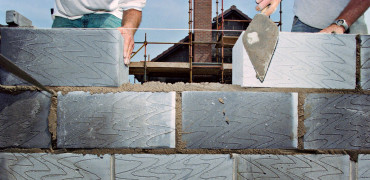The Government has come under pressure to revise building regulations to ensure the UK’s homes and buildings do not overheat as annual temperatures continue to rise.
The Committee on Climate Change (CCC) recommended the new-look regulations two years ago, but they were blocked by ministers keen to ease regulations affecting the housebuilding industry.
However, in its annual report the CCC is critical of the UK’s lack of progress on tackling global warming and claims that without action the number of people dying as a result of heat is expected to more than triple to 7,000 a year by 2040.
“What we need from government is a willingness to accept that building regulations, properly done, are not an incubus [problem] – they are in fact an opportunity to enable people to build for the future,” said Lord Deben, chair of the CCC and a former Conservative environment secretary.
“It is absolutely essential to recognise that we will not deal with the problems of climate change unless we have tougher building regulations.”
Only by tackling mitigation and adaptation together, can we hope to deliver a resilient built environment that’s fit for the future.
Building regulations as a whole are likely to come under review following the Grenfell Tower fire and the subsequent failure of other tower blocks across the UK to pass basic fire safety tests.
Others maintain the Government must act decisively to create regulations that are fit for purpose, particularly when it comes to climate change.
Julie Hirigoyen, UK-GBC chief executive, added: “With emissions from the UK’s building stock rising, we urgently need effective policies and a clear long-term strategy in place to reignite investment in low carbon buildings.
“Energy efficiency must sit at the heart of the Emissions Reduction Plan, the National Infrastructure Assessment and the Industrial Strategy to fully realise its potential to drive jobs, growth and productivity.
“At the same time, progress needs to be made in making our towns and cities more resilient to the inevitable effects of climate change. The threats posed by issues such as flooding and overheating are increasing. This needs to be addressed with robust regulations which drive innovation in areas including sustainable drainage and smart design.
“Only by tackling mitigation and adaptation together, can we hope to deliver a resilient built environment that’s fit for the future.”
Paul Groves is Editor of Specification Magazine. If you have any questions about this article, you can contact us via email.
Or if you would like to tweet us, please follow our MEUK_LES twitter page.
We upload new articles every week so remember to check back regularly.
You can also sign up for our monthly newsletter below.



